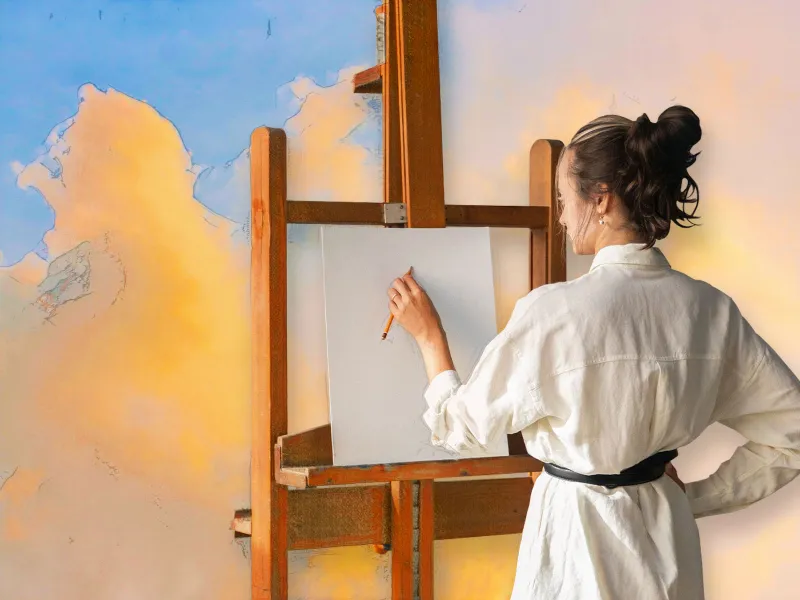Robert Draws – The impact of painting on modern culture has been profound and enduring. Throughout history, it has shaped societies, inspired movements, and influenced culture. In modern times, the power of painting continues to challenge norms, evoke emotions, and promote social change. Artists use this medium to convey messages, document history, and explore new ways of seeing the world. From street art to contemporary gallery works, painting plays an integral role in shaping today’s visual culture. Its presence in our everyday lives, from advertisements to public murals, showcases its enduring significance in the modern era.
The Role of Painting in Cultural Identity
One of the most significant aspects of painting is its ability to reflect and shape cultural identity. Artists use their works to express the values, struggles, and dreams of their communities. For instance, during times of social and political upheaval, artists turn to painting to express resistance or solidarity. The iconic works of artists such as Picasso and Frida Kahlo illustrate how painting becomes a reflection of cultural experiences and historical events. Through painting, cultures can preserve their stories and share their unique perspectives with the world.
Painting as a Tool for Social Commentary
The impact of painting on modern culture is also evident in its role as a tool for social commentary. Many contemporary artists use their canvases to address societal issues, from inequality and poverty to climate change and human rights. The political power of painting cannot be underestimated. Artists like Banksy use street art as a form of protest, challenging authority and sparking conversations on critical topics. The immediacy and visibility of street art make it a unique platform for raising awareness and promoting change in society.
The Evolution of Styles and Movements
Throughout the 20th and 21st centuries, various painting styles and movements have emerged, each contributing to the evolution of modern culture. Movements like Abstract Expressionism, Surrealism, and Pop Art have redefined what painting can be. These styles broke away from traditional forms and embraced bold experimentation. Modern culture is heavily influenced by these movements, as they paved the way for innovation and new ways of thinking. Artists began to question the boundaries of art and explore abstract, conceptual, and even digital forms of painting. This freedom has led to a broader acceptance of various art forms in mainstream culture.
The Commercialization of Painting
Another way that painting impacts modern culture is through its commercialization. Art galleries, auctions, and online platforms have turned painting into a lucrative industry. Collectors and investors now view art as a form of investment. The global art market allows artists to gain recognition and exposure, reaching audiences beyond their local communities. However, this commercialization also raises questions about the accessibility of art. While some see this as a way to bring art to the masses, others argue that it has led to a focus on profit rather than artistic value.
“Read more: Roots and Rhythms: Preserving Cultural Identity Through Music”
The Digital Revolution and Painting
The digital revolution has also had a profound effect on the impact of painting on modern culture. With the rise of digital platforms, artists now have the ability to share their work with a global audience instantly. Digital painting software and tools have opened up new possibilities for artists to create in ways that were once unimaginable. Artists now blend traditional techniques with digital mediums, expanding the definition of painting. This intersection of technology and painting has influenced how modern culture consumes and interacts with art.
Painting as Therapy and Personal Expression
In modern culture, painting has also become a form of personal expression and therapy. Many people turn to painting as a way to cope with stress, anxiety, or personal challenges. Art therapy has become a widely recognized method of healing, allowing individuals to express their emotions without words. Through painting, people can explore their inner worlds and find catharsis. This therapeutic aspect of painting shows its significance in not only culture but also in individual well-being.
The Future of Painting in Modern Culture
The impact of painting on modern culture is continuously evolving. As society changes, so does the way we create and experience art. The rise of virtual reality, augmented reality, and AI-generated art are all influencing the future of painting. While traditional methods of painting will likely continue to thrive, new technologies will bring fresh perspectives and opportunities. As long as there is a need for expression, painting will remain a vital part of modern culture.



